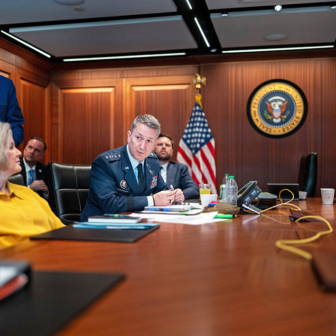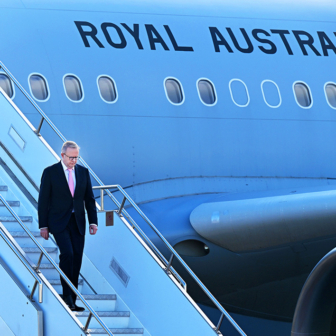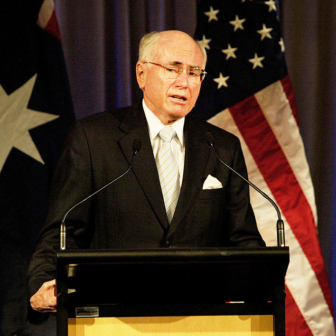THESE should be fat days for Australian defence industries, large and small. With the federal government committed to approving rearmament projects worth more than $150 billion over the next eight years or so, business ought to be booming.
But things are looking increasingly uncertain for the eight prime contractors and some 3000 small to medium contractors who make up Australia’s defence industry base with their 29,000 employees. There is talk of financial strain even within the globalised primes and of impending job-shedding as government contracts and spending slow to a trickle.
Adding to defence industry pessimism is strong speculation that the federal government is likely to progressively trim back planned increases in the current annual $22 billion defence budget to help fund Queensland flood recovery programs and to help bring the budget back to surplus in 2012–13. Already there are claims that defence is deliberately underspending to cover this possibility. The defence minister, Stephen Smith, has told his department to apply greater rigour to its financial management.
But this is only one of a witches’ brew of pressures bearing down on defence industry around the country at a time when rising Chinese military power and assertiveness is unsettling global power relationships.
There are also concerns that recent defence budget cutbacks in Britain and the United States will encourage hard-pressed British and American firms to push more aggressively for contracts in Australia. Their entry would stiffen already tough local competition.
The federal government has added further pressure by adopting a fundamentalist pro-competition policy for defence contracts. Last year’s defence industry policy statement repeatedly stressed that “value for money” was the core principle underpinning procurement and that competition was “a key element of the government’s approach.” According to the industry statement, “The only way to ensure a viable and resilient industry base is to allow market forces to determine which companies will be successful, innovative and able to survive.”
This is doubtless sound theoretical economic sense. Inefficient firms should not be subsidised. But 50 per cent of defence industry jobs are reportedly in small and medium-sized companies and communities’ dependence on them means political pressure on government economic purity. Moreover, the government recognises the strategic security importance of retaining certain identified defence industry capabilities (the so-called Priority Industry Capabilities or PICs) even if they require support. There is unresolved tension in this policy.
Further complications arise from the government’s decision, after the 2008 Mortimer review of defence acquisition, to mandate greater consideration of commercial and military off-the-shelf (or COTS and MOTS) equipment purchases rather than Australianised or Australian-designed variations. The advantages are faster and usually cheaper acquisition and less opportunity for so-called gold-plating of equipment by the military. The immediate disadvantage is that innovation opportunities are reduced for Australian firms; the strategic disadvantage is that COTS and MOTS acquisitions will tend to deny Australian warfighters any technological edge they might gain from tweaking COTS and MOTS purchases to suit their needs.
In addition, hard-pressed defence industries face the prospect of increasing labour costs because of the shortage of many skilled trades in Australia and the willingness of the booming minerals export industry to pay top-dollar to hire them. This pressure will be intensified by the demand for skilled tradespeople to restore Queensland’s flood-battered infrastructure.
It remains to be seen how severely the government might cut back its commitment to 3 per cent real growth in the defence budget to 2017–18 and 2.2 per cent real growth from 2018–19 to 2030. But estimates of the costs of repairing Queensland flood damage run into tens of billions of dollars and seem certain to threaten the government’s ambition for a budget surplus by 2012–13. There seems little doubt the department of finance will be looking for sacrifices from defence.
In fact the government has already warned of possible cutbacks in the planned acquisition of new air, sea and land weapons set out in the 2009 defence white paper. Deeply concerned about increasing Chinese military power, the white paper indicated the government’s intention to acquire up to 100 F-35 Joint Strike Fighters, twelve submarines, three air warfare destroyers and eight frigates, among much else.
But the December 2010 update of the Defence Capability Plan, which sets out intended purchases, warns: “Changing strategic or economic circumstances, new technologies and changed priorities will influence specific proposals contained in this plan. It must be anticipated that changes will occur in coming years.” It may be sensible to flag this sort of flexibility in advance, but it adds to the uncertainties faced by defence firms considering tendering for contracts.
The doubts surrounding Australia’s defence procurement intentions are occurring in a highly dynamic global strategic context dominated by the febrile relationship between China and the United States, Australia’s main ally. While Beijing insists its military build-up is purely defensive, its increasing willingness to throw its weight around is increasingly worrying the United States and allies including Australia and Japan.
While the United States has the strength to cut a planned $78 billion from its military budget without strategic risk, the planned Australian acquisitions are needed to retain the nation’s technological edge in the region, to ensure Australia remains a credible player in regional defence into the twenty-first century and, if necessary, to contribute to regional and global military coalitions.
Uncertainties facing the companies that are supposed to deliver the military goods raise questions about the nation’s ability to achieve these objectives. The federal government should clarify its intentions without delay. •




